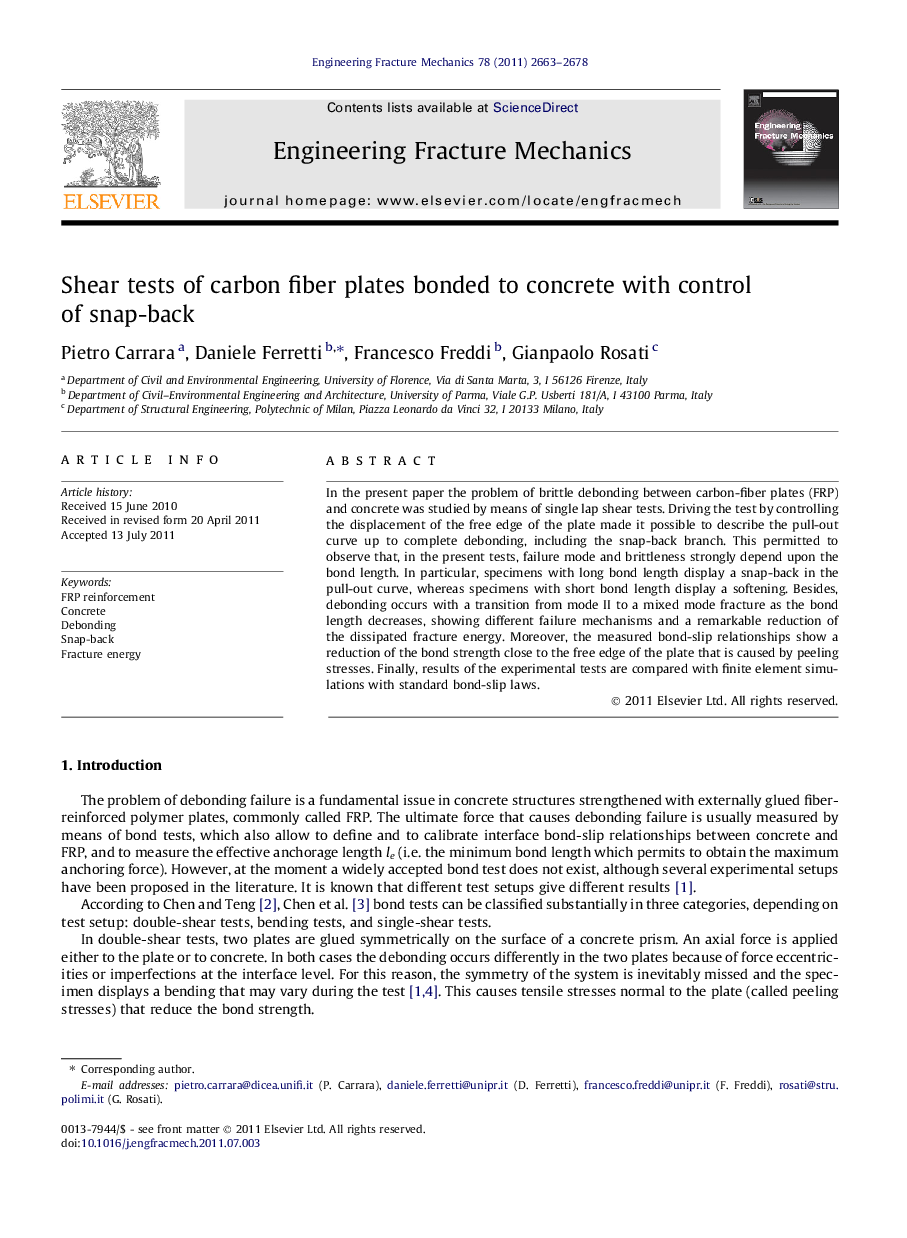| Article ID | Journal | Published Year | Pages | File Type |
|---|---|---|---|---|
| 767613 | Engineering Fracture Mechanics | 2011 | 16 Pages |
In the present paper the problem of brittle debonding between carbon-fiber plates (FRP) and concrete was studied by means of single lap shear tests. Driving the test by controlling the displacement of the free edge of the plate made it possible to describe the pull-out curve up to complete debonding, including the snap-back branch. This permitted to observe that, in the present tests, failure mode and brittleness strongly depend upon the bond length. In particular, specimens with long bond length display a snap-back in the pull-out curve, whereas specimens with short bond length display a softening. Besides, debonding occurs with a transition from mode II to a mixed mode fracture as the bond length decreases, showing different failure mechanisms and a remarkable reduction of the dissipated fracture energy. Moreover, the measured bond-slip relationships show a reduction of the bond strength close to the free edge of the plate that is caused by peeling stresses. Finally, results of the experimental tests are compared with finite element simulations with standard bond-slip laws.
► Single-lap shear tests of CFRP plates bonded to concrete have been performed on 13 specimens with different bond length. ► Failure mode in the snap-back regime was observed controlling the slip at the free edge of the plate. ► Failure mode occurs with a transition from mode II to a mixed mode fracture as the bond length decreases.► Code standard modes overestimate the bond strength in case of short bond lengths.
